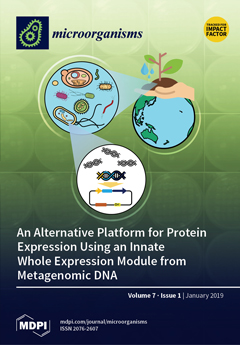Veterinary diets are intended for diseased animals and may contain cereal grains, mainly maize and/or wheat. These, in turn, are often infected with pathogens of the
Fusarium genus, which are able to produce numerous harmful mycotoxins. Forty-two samples of veterinary diets for dogs
[...] Read more.
Veterinary diets are intended for diseased animals and may contain cereal grains, mainly maize and/or wheat. These, in turn, are often infected with pathogens of the
Fusarium genus, which are able to produce numerous harmful mycotoxins. Forty-two samples of veterinary diets for dogs and cats were analyzed for the presence of
Fusarium species and mycotoxins. Species were identified using molecular methods and the ergosterol and mycotoxins (fumonisin B
1, deoxynivalenol, nivalenol and zearalenone) were quantified using HPLC methods. Two
Fusarium species were identified:
Fusarium proliferatum and
Fusarium verticillioides. The highest concentrations of fumonisin B
1, deoxynivalenol, nivalenol and zearalenone were 74.83, 2318.05, 190.90, and 45.84 ng/g, respectively. Only 9.5% of the samples were free from
Fusarium mycotoxins. The acceptable limits of mycotoxin content in animal feed, specified by the EU regulations, were not exceeded in any of the samples tested. The mean mycotoxin content in veterinary diets for cats was lower than for dogs. Thus, it is recommended that veterinary diets are examined, since the mycotoxin contamination pose additional risk to animal health. The knowledge on
Fusarium occurrence in veterinary diets is scarce and as far as we are aware this is the first report concerning the occurrence of
Fusarium spp. and their important secondary metabolites—mycotoxins—in different types of veterinary diets for companion animals in Poland.
Full article






